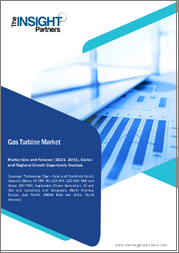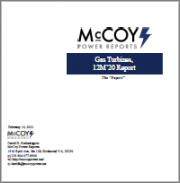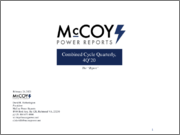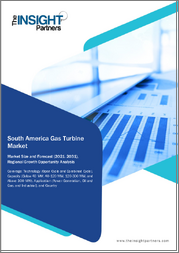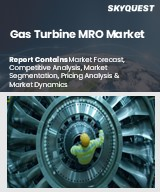
|
시장보고서
상품코드
1592838
세계의 산업용 가스 터빈 점화 시스템 시장 : 컴포넌트, 가스 터빈 유형, 용도별 예측(2025-2030년)Industrial Gas Turbine Ignition System Market by Component (Exciters, Igniters, Leads), Gas Turbine Type (Heavy-Duty Turbine, Light-Duty Turbine), Application - Global Forecast 2025-2030 |
||||||
산업용 가스 터빈 점화 시스템 시장은 2023년에 14억 6,000만 달러로 평가되었고, 2024년에는 16억 달러에 이를 것으로 예측되며, 복합 연간 성장률(CAGR) 9.36%로 성장하여, 2030년에는 27억 4,000만 달러에 달할 것으로 예상됩니다.
산업용 가스 터빈 점화 시스템은 발전, 석유, 가스, 항공 등 다양한 산업에서 널리 사용되는 가스 터빈의 연소 프로세스를 시작하고 유지하는 데 필수적입니다. 터빈 운전과 에너지 생산 시스템의 전반적인 안전성과 신뢰성을 보장하는 데 중요합니다. 역할을 하는 것에 기인하고 있습니다.그 용도는 발전소에서의 발전으로부터, 석유 화학 플랜트에서의 컴프레서의 구동, 항공우주 분야에서의 추진력의 서포트까지 다방면에 걸칩니다. 지속적이고 효율적인 에너지 공급에 의존하는 발전소, 정유소 및 산업 시설이 주로 포함됩니다.
| 주요 시장 통계 | |
|---|---|
| 기준년(2023) | 14억 6,000만 달러 |
| 예측년(2024) | 16억 달러 |
| 예측년(2030) | 27억 4,000만 달러 |
| 복합 연간 성장률(CAGR)(%) | 9.36% |
시장 인사이트에 따르면 세계 에너지 수요 증가와 보다 깨끗한 에너지 원으로의 전환이 이 분야의 성장에 크게 영향을 미칩니다. 내구성, 효율성, 정밀 점화 제어의 강화에 중점을 둔 점화 시스템의 기술적 진보는 유리한 기회를 제공합니다. 첨단 재료 개발과 예지 보전 기능을 갖춘 스마트 점화 시스템은 잠재적인 성장 분야입니다. 그러나 초기 비용의 높이, 유지 보수의 필요성, 까다로운 환경 규제 등의 과제가 시장 성장에 제약을 주고 있습니다. 또한 원재료 가격 변동과 설치 복잡성이 시장 확대를 방해할 수 있습니다.
이러한 비즈니스 기회를 활용하려는 기업은 재료 과학과 디지털 기술의 통합에서 혁신에 주력하는 것이 좋습니다. 친환경적이고 지속가능한 점화 솔루션을 개발함으로써 증가하는 환경 문제를 해결할 수 있습니다. 진단 및 유지보수 솔루션에 IoT와 AI를 활용함으로써 기업은 신뢰성과 효율성을 약속하는 고급 점화 시스템을 제공할 수 있습니다. 또한, 산업화가 진행되는 신흥 시장에 진출함으로써 새로운 수익원을 얻을 수 있습니다. 시장의 성격이라는 점에서 경쟁은 완만하며, 기업은 시장에서의 존재감을 높이기 위해 제공하는 제품의 다양화와 전략적 파트너십에 주력하고 있습니다. 따라서 경쟁력을 유지하고 혁신을 촉진하기 위해서는 항상 기술 동향과 규제 변화를 파악하는 것이 중요합니다.
시장 역학 : 빠르게 진화하는 산업용 가스 터빈 점화 시스템 시장의 주요 시장 인사이트 공개
산업용 가스 터빈 점화 시스템 시장은 수요 및 공급의 역동적인 상호 작용에 의해 변모를 이루고 있습니다. 의사 결정, 새로운 비즈니스 기회를 획득 할 수 있습니다. 이러한 동향을 종합적으로 파악함으로써 기업은 정치적, 지리적, 기술적, 사회적, 경제적 영역에 걸친 다양한 리스크를 경감할 수 있음과 동시에 소비자 행동과 그것 제조 비용과 구매 동향에 미치는 영향을보다 명확하게 이해할 수 있습니다.
- 시장 성장 촉진요인
- 산업용 가스 터빈의 운전 효율에 의한 기호의 고조
- 인구 증가에 의한 에너지의 대량 소비
- 가스 화력 발전의 채용 증가
- 시장 성장 억제요인
- 연소연료의 문제와 가스터빈의 성능 저하
- 시장 기회
- 가스와 재생 가능 에너지의 이용을 촉진하는 정부의 지원
- 가스 터빈 운전의 디지털화
- 시장의 과제
- 점화 시스템의 문제 해결의 복잡성
Porter's Five Forces : 산업용 가스 터빈 점화 시스템 시장을 탐색하는 전략 도구
Porter's Five Forces Framework는 시장 상황경쟁 구도를 이해하는 중요한 도구입니다. Porter's Five Forces Framework는 기업의 경쟁력을 평가하고 전략적 기회를 탐구하는 명확한 기술을 제공합니다. 이 프레임워크는 기업이 시장 내 세력도를 평가하고 신규 사업의 수익성을 판단하는 데 도움이 됩니다. 이러한 인사이트을 통해 기업은 자사의 강점을 활용하고, 약점을 해결하고, 잠재적인 과제를 피할 수 있으며, 보다 강인한 시장에서의 포지셔닝을 보장할 수 있습니다.
PESTLE 분석 : 산업용 가스 터빈 점화 시스템 시장의 외부 영향을 파악
외부 거시 환경 요인은 산업용 가스 터빈 점화 시스템 시장의 성과 역학을 형성하는 데 매우 중요한 역할을 합니다. 정치적, 경제적, 사회적, 기술적, 법적, 환경적 요인 분석은 이러한 영향을 탐색하는 데 필요한 정보를 제공합니다. PESTLE 요인을 조사함으로써 기업은 잠재적인 위험과 기회를 더 잘 이해할 수 있습니다. 이 분석을 통해 기업은 규제, 소비자 선호, 경제 동향의 변화를 예측하고 앞으로 예상되는 적극적인 의사 결정을 할 준비를 할 수 있습니다.
시장 점유율 분석 산업용 가스 터빈 점화 시스템 시장 경쟁 구도 파악
산업용 가스 터빈 점화 시스템 시장의 상세한 시장 점유율 분석을 통해 공급업체의 성과를 종합적으로 평가할 수 있습니다. 위의 포지셔닝 이를 통해 시장의 집중, 단편화, 통합 동향을 밝혀내고, 벤더는 경쟁이 격화하는 가운데 자신의 지위를 높이는 전략적 의사결정을 하기 위해서 필요한 지식을 얻을 수 있습니다.
FPNV 포지셔닝 매트릭스 산업용 가스 터빈 점화 시스템 시장에서 공급업체의 성능 평가
FPNV 포지셔닝 매트릭스는 산업용 가스 터빈 점화 시스템 시장에서 벤더를 평가하는 중요한 도구입니다. 기업은 수익, 고객 기반, 성장률 등 주요 지표를 비교하여 경쟁 포지셔닝을 밝힐 수 있습니다. 이 분석을 통해 시장 집중, 단편화, 통합 동향을 밝혀내고 벤더들은 경쟁이 치열해지는 가운데 자사의 지위를 높이는 전략적 의사 결정을 내리는 데 필요한 지식을 얻을 수 있습니다.
전략 분석 및 권장 산업용 가스 터빈 점화 시스템 시장의 성공에 대한 길을 그립니다.
산업용 가스터빈 점화시스템 시장의 전략분석은 시장에서의 프레즌스 강화를 목표로 하는 기업에 필수적입니다. 이 접근 방식을 통해 경쟁 구도에서 과제를 극복하고 새로운 비즈니스 기회를 활용하여 장기적인 성공을 거둘 수 있는 시스템을 구축할 수 있습니다.
이 보고서는 주요 관심 분야를 포괄하는 시장의 종합적인 분석을 제공합니다.
1. 시장 침투 : 현재 시장 환경의 상세한 검토, 주요 기업의 광범위한 데이터, 시장 도달범위 및 전반적인 영향력 평가.
2. 시장 개척도 : 신흥 시장의 성장 기회를 파악하고 기존 분야의 확장 가능성을 평가하며 미래 성장을 위한 전략적 로드맵을 제공합니다.
3. 시장 다양화 : 최근 제품 출시, 미개척 지역, 업계의 주요 진보, 시장을 형성하는 전략적 투자를 분석합니다.
4. 경쟁 평가 및 정보 : 경쟁 구도를 철저히 분석하여 시장 점유율, 사업 전략, 제품 포트폴리오, 인증, 규제 당국 승인, 특허 동향, 주요 기업의 기술 진보 등을 검증합니다.
5. 제품 개발 및 혁신 : 미래 시장 성장을 가속할 것으로 예상되는 최첨단 기술, R&D 활동, 제품 혁신을 강조합니다.
또한 이해관계자가 충분한 정보를 얻고 의사결정을 할 수 있도록 중요한 질문에 대답하고 있습니다.
1. 현재 시장 규모와 향후 성장 예측은?
2. 최고의 투자 기회를 제공하는 제품, 부문 및 지역은 어디입니까?
3. 시장을 형성하는 주요 기술 동향과 규제의 영향은?
4. 주요 벤더의 시장 점유율과 경쟁 포지션은?
5. 벤더 시장 진입, 철수 전략의 원동력이 되는 수익원과 전략적 기회는 무엇인가?
목차
제1장 서문
제2장 조사 방법
제3장 주요 요약
제4장 시장 개요
제5장 시장 인사이트
- 시장 역학
- 성장 촉진요인
- 산업용 가스 터빈에 관련된 운용 효율에 의한 호감도의 향상
- 인구 증가로 인한 에너지 소비 증가
- 가스 화력 발전의 도입 증가
- 억제요인
- 연료 연소시의 연소 문제와 가스 터빈의 성능 저하
- 기회
- 가스와 재생 가능 에너지의 이용 촉진을 향한 정부 지원
- 가스 터빈 운전의 디지털화
- 과제
- 점화 시스템의 문제 해결의 복잡성
- 성장 촉진요인
- 시장 세분화 분석
- Porter's Five Forces 분석
- PESTEL 분석
- 정치
- 경제
- 사회
- 기술
- 법률
- 환경
제6장 산업용 가스 터빈 점화 시스템 시장 : 컴포넌트별
- 엑사이터
- 점화장치
- 리드
- 스파크 플러그
제7장 산업용 가스 터빈 점화 시스템 시장 : 가스 터빈 유형별
- 대형 터빈
- 경량 터빈
제8장 산업용 가스 터빈 점화 시스템 시장 : 용도별
- 기계 구동
- 발전
제9장 아메리카 산업용 가스 터빈 점화 시스템 시장
- 아르헨티나
- 브라질
- 캐나다
- 멕시코
- 미국
제10장 아시아태평양의 산업용 가스 터빈 점화 시스템 시장
- 호주
- 중국
- 인도
- 인도네시아
- 일본
- 말레이시아
- 필리핀
- 싱가포르
- 한국
- 대만
- 태국
- 베트남
제11장 유럽, 중동 및 아프리카의 산업용 가스 터빈 점화 시스템 시장
- 덴마크
- 이집트
- 핀란드
- 프랑스
- 독일
- 이스라엘
- 이탈리아
- 네덜란드
- 나이지리아
- 노르웨이
- 폴란드
- 카타르
- 러시아
- 사우디아라비아
- 남아프리카
- 스페인
- 스웨덴
- 스위스
- 터키
- 아랍에미리트(UAE)
- 영국
제12장 경쟁 구도
- 시장 점유율 분석(2023년)
- FPNV 포지셔닝 매트릭스(2023년)
- 경쟁 시나리오 분석
- 전략 분석과 제안
기업 목록
- Ansaldo Energia SpA
- Champion Aerospace Inc.
- Chentronics, LLC by Koch Industries, Inc.
- ESAB Corporation
- General Electric Company
- GTC Control Solutions, Inc.
- Hatraco Technische Handelsonderneming BV
- HOERBIGER Holding AG
- Kawasaki Heavy Industries, Ltd.
- MAN Energy Solutions SE
- Mitsubishi Heavy Industries Ltd.
- Siemens AG
- Tenneco Inc.
- Woodward, Inc.
- Wartsila Corporation
The Industrial Gas Turbine Ignition System Market was valued at USD 1.46 billion in 2023, expected to reach USD 1.60 billion in 2024, and is projected to grow at a CAGR of 9.36%, to USD 2.74 billion by 2030.
The industrial gas turbine ignition system is vital in initiating and sustaining the combustion process within gas turbines, which are widely utilized across various industries such as power generation, oil & gas, and aviation. This ignition system's necessity stems from its critical role in ensuring efficient turbine operation and the overall safety and reliability of energy production systems. Its applications span a spectrum from electricity generation in power plants to driving compressors in petrochemical plants and supporting propulsion in aerospace sectors. The end-use scope of these systems primarily includes power plants, refineries, and industrial facilities that rely on continuous and efficient energy supply.
| KEY MARKET STATISTICS | |
|---|---|
| Base Year [2023] | USD 1.46 billion |
| Estimated Year [2024] | USD 1.60 billion |
| Forecast Year [2030] | USD 2.74 billion |
| CAGR (%) | 9.36% |
Market insights reveal that the expanding global energy demand and the shift towards cleaner energy sources significantly influence growth in this sector. Technological advancements in ignition systems, emphasizing enhanced durability, efficiency, and precision ignition control, provide lucrative opportunities. The development of advanced materials and smart ignition systems with predictive maintenance capabilities are potential growth areas. However, challenges such as high initial costs, maintenance requirements, and stringent environmental regulations pose limitations to market growth. Additionally, volatility in raw material prices and complexities in installation may hinder market expansion.
For businesses aiming to capitalize on these opportunities, focusing on innovation in materials science and digital technology integration is recommended. Developing eco-friendly and sustainable ignition solutions can cater to growing environmental concerns. By leveraging IoT and AI for diagnostic and maintenance solutions, companies can offer advanced ignition systems that promise reliability and efficiency. Furthermore, expanding into emerging markets where industrialization is on the rise can provide new revenue streams. In terms of the nature of the market, it is moderately competitive with players focusing on diversification of product offerings and strategic partnerships to enhance market presence. As such, staying abreast of technological trends and regulatory changes is crucial for maintaining competitiveness and fostering innovation.
Market Dynamics: Unveiling Key Market Insights in the Rapidly Evolving Industrial Gas Turbine Ignition System Market
The Industrial Gas Turbine Ignition System Market is undergoing transformative changes driven by a dynamic interplay of supply and demand factors. Understanding these evolving market dynamics prepares business organizations to make informed investment decisions, refine strategic decisions, and seize new opportunities. By gaining a comprehensive view of these trends, business organizations can mitigate various risks across political, geographic, technical, social, and economic domains while also gaining a clearer understanding of consumer behavior and its impact on manufacturing costs and purchasing trends.
- Market Drivers
- Increased preference due to the operational efficiencies associated with industrial gas turbines
- High consumption of energy due to the rising population
- Rising adoption of gas-fired power generation
- Market Restraints
- Combustion problems of burning fuel and poor gas turbine performance
- Market Opportunities
- Government support to promote the use of gas and renewable energy
- Digitalization of gas turbine operation
- Market Challenges
- Complexity for troubleshooting ignition system
Porter's Five Forces: A Strategic Tool for Navigating the Industrial Gas Turbine Ignition System Market
Porter's five forces framework is a critical tool for understanding the competitive landscape of the Industrial Gas Turbine Ignition System Market. It offers business organizations with a clear methodology for evaluating their competitive positioning and exploring strategic opportunities. This framework helps businesses assess the power dynamics within the market and determine the profitability of new ventures. With these insights, business organizations can leverage their strengths, address weaknesses, and avoid potential challenges, ensuring a more resilient market positioning.
PESTLE Analysis: Navigating External Influences in the Industrial Gas Turbine Ignition System Market
External macro-environmental factors play a pivotal role in shaping the performance dynamics of the Industrial Gas Turbine Ignition System Market. Political, Economic, Social, Technological, Legal, and Environmental factors analysis provides the necessary information to navigate these influences. By examining PESTLE factors, businesses can better understand potential risks and opportunities. This analysis enables business organizations to anticipate changes in regulations, consumer preferences, and economic trends, ensuring they are prepared to make proactive, forward-thinking decisions.
Market Share Analysis: Understanding the Competitive Landscape in the Industrial Gas Turbine Ignition System Market
A detailed market share analysis in the Industrial Gas Turbine Ignition System Market provides a comprehensive assessment of vendors' performance. Companies can identify their competitive positioning by comparing key metrics, including revenue, customer base, and growth rates. This analysis highlights market concentration, fragmentation, and trends in consolidation, offering vendors the insights required to make strategic decisions that enhance their position in an increasingly competitive landscape.
FPNV Positioning Matrix: Evaluating Vendors' Performance in the Industrial Gas Turbine Ignition System Market
The Forefront, Pathfinder, Niche, Vital (FPNV) Positioning Matrix is a critical tool for evaluating vendors within the Industrial Gas Turbine Ignition System Market. This matrix enables business organizations to make well-informed decisions that align with their goals by assessing vendors based on their business strategy and product satisfaction. The four quadrants provide a clear and precise segmentation of vendors, helping users identify the right partners and solutions that best fit their strategic objectives.
Strategy Analysis & Recommendation: Charting a Path to Success in the Industrial Gas Turbine Ignition System Market
A strategic analysis of the Industrial Gas Turbine Ignition System Market is essential for businesses looking to strengthen their global market presence. By reviewing key resources, capabilities, and performance indicators, business organizations can identify growth opportunities and work toward improvement. This approach helps businesses navigate challenges in the competitive landscape and ensures they are well-positioned to capitalize on newer opportunities and drive long-term success.
Key Company Profiles
The report delves into recent significant developments in the Industrial Gas Turbine Ignition System Market, highlighting leading vendors and their innovative profiles. These include Ansaldo Energia S.p.A., Champion Aerospace Inc., Chentronics, LLC by Koch Industries, Inc., ESAB Corporation, General Electric Company, GTC Control Solutions, Inc., Hatraco Technische Handelsonderneming B.V., HOERBIGER Holding AG, Kawasaki Heavy Industries, Ltd., MAN Energy Solutions SE, Mitsubishi Heavy Industries Ltd., Siemens AG, Tenneco Inc., Woodward, Inc., and Wartsila Corporation.
Market Segmentation & Coverage
This research report categorizes the Industrial Gas Turbine Ignition System Market to forecast the revenues and analyze trends in each of the following sub-markets:
- Based on Component, market is studied across Exciters, Igniters, Leads, and Spark Plugs.
- Based on Gas Turbine Type, market is studied across Heavy-Duty Turbine and Light-Duty Turbine.
- Based on Application, market is studied across Mechanical Drive and Power Generation.
- Based on Region, market is studied across Americas, Asia-Pacific, and Europe, Middle East & Africa. The Americas is further studied across Argentina, Brazil, Canada, Mexico, and United States. The United States is further studied across California, Florida, Illinois, New York, Ohio, Pennsylvania, and Texas. The Asia-Pacific is further studied across Australia, China, India, Indonesia, Japan, Malaysia, Philippines, Singapore, South Korea, Taiwan, Thailand, and Vietnam. The Europe, Middle East & Africa is further studied across Denmark, Egypt, Finland, France, Germany, Israel, Italy, Netherlands, Nigeria, Norway, Poland, Qatar, Russia, Saudi Arabia, South Africa, Spain, Sweden, Switzerland, Turkey, United Arab Emirates, and United Kingdom.
The report offers a comprehensive analysis of the market, covering key focus areas:
1. Market Penetration: A detailed review of the current market environment, including extensive data from top industry players, evaluating their market reach and overall influence.
2. Market Development: Identifies growth opportunities in emerging markets and assesses expansion potential in established sectors, providing a strategic roadmap for future growth.
3. Market Diversification: Analyzes recent product launches, untapped geographic regions, major industry advancements, and strategic investments reshaping the market.
4. Competitive Assessment & Intelligence: Provides a thorough analysis of the competitive landscape, examining market share, business strategies, product portfolios, certifications, regulatory approvals, patent trends, and technological advancements of key players.
5. Product Development & Innovation: Highlights cutting-edge technologies, R&D activities, and product innovations expected to drive future market growth.
The report also answers critical questions to aid stakeholders in making informed decisions:
1. What is the current market size, and what is the forecasted growth?
2. Which products, segments, and regions offer the best investment opportunities?
3. What are the key technology trends and regulatory influences shaping the market?
4. How do leading vendors rank in terms of market share and competitive positioning?
5. What revenue sources and strategic opportunities drive vendors' market entry or exit strategies?
Table of Contents
1. Preface
- 1.1. Objectives of the Study
- 1.2. Market Segmentation & Coverage
- 1.3. Years Considered for the Study
- 1.4. Currency & Pricing
- 1.5. Language
- 1.6. Stakeholders
2. Research Methodology
- 2.1. Define: Research Objective
- 2.2. Determine: Research Design
- 2.3. Prepare: Research Instrument
- 2.4. Collect: Data Source
- 2.5. Analyze: Data Interpretation
- 2.6. Formulate: Data Verification
- 2.7. Publish: Research Report
- 2.8. Repeat: Report Update
3. Executive Summary
4. Market Overview
5. Market Insights
- 5.1. Market Dynamics
- 5.1.1. Drivers
- 5.1.1.1. Increased preference due to the operational efficiencies associated with industrial gas turbines
- 5.1.1.2. High consumption of energy due to the rising population
- 5.1.1.3. Rising adoption of gas-fired power generation
- 5.1.2. Restraints
- 5.1.2.1. Combustion problems of burning fuel and poor gas turbine performance
- 5.1.3. Opportunities
- 5.1.3.1. Government support to promote the use of gas and renewable energy
- 5.1.3.2. Digitalization of gas turbine operation
- 5.1.4. Challenges
- 5.1.4.1. Complexity for troubleshooting ignition system
- 5.1.1. Drivers
- 5.2. Market Segmentation Analysis
- 5.3. Porter's Five Forces Analysis
- 5.3.1. Threat of New Entrants
- 5.3.2. Threat of Substitutes
- 5.3.3. Bargaining Power of Customers
- 5.3.4. Bargaining Power of Suppliers
- 5.3.5. Industry Rivalry
- 5.4. PESTLE Analysis
- 5.4.1. Political
- 5.4.2. Economic
- 5.4.3. Social
- 5.4.4. Technological
- 5.4.5. Legal
- 5.4.6. Environmental
6. Industrial Gas Turbine Ignition System Market, by Component
- 6.1. Introduction
- 6.2. Exciters
- 6.3. Igniters
- 6.4. Leads
- 6.5. Spark Plugs
7. Industrial Gas Turbine Ignition System Market, by Gas Turbine Type
- 7.1. Introduction
- 7.2. Heavy-Duty Turbine
- 7.3. Light-Duty Turbine
8. Industrial Gas Turbine Ignition System Market, by Application
- 8.1. Introduction
- 8.2. Mechanical Drive
- 8.3. Power Generation
9. Americas Industrial Gas Turbine Ignition System Market
- 9.1. Introduction
- 9.2. Argentina
- 9.3. Brazil
- 9.4. Canada
- 9.5. Mexico
- 9.6. United States
10. Asia-Pacific Industrial Gas Turbine Ignition System Market
- 10.1. Introduction
- 10.2. Australia
- 10.3. China
- 10.4. India
- 10.5. Indonesia
- 10.6. Japan
- 10.7. Malaysia
- 10.8. Philippines
- 10.9. Singapore
- 10.10. South Korea
- 10.11. Taiwan
- 10.12. Thailand
- 10.13. Vietnam
11. Europe, Middle East & Africa Industrial Gas Turbine Ignition System Market
- 11.1. Introduction
- 11.2. Denmark
- 11.3. Egypt
- 11.4. Finland
- 11.5. France
- 11.6. Germany
- 11.7. Israel
- 11.8. Italy
- 11.9. Netherlands
- 11.10. Nigeria
- 11.11. Norway
- 11.12. Poland
- 11.13. Qatar
- 11.14. Russia
- 11.15. Saudi Arabia
- 11.16. South Africa
- 11.17. Spain
- 11.18. Sweden
- 11.19. Switzerland
- 11.20. Turkey
- 11.21. United Arab Emirates
- 11.22. United Kingdom
12. Competitive Landscape
- 12.1. Market Share Analysis, 2023
- 12.2. FPNV Positioning Matrix, 2023
- 12.3. Competitive Scenario Analysis
- 12.4. Strategy Analysis & Recommendation
Companies Mentioned
- 1. Ansaldo Energia S.p.A.
- 2. Champion Aerospace Inc.
- 3. Chentronics, LLC by Koch Industries, Inc.
- 4. ESAB Corporation
- 5. General Electric Company
- 6. GTC Control Solutions, Inc.
- 7. Hatraco Technische Handelsonderneming B.V.
- 8. HOERBIGER Holding AG
- 9. Kawasaki Heavy Industries, Ltd.
- 10. MAN Energy Solutions SE
- 11. Mitsubishi Heavy Industries Ltd.
- 12. Siemens AG
- 13. Tenneco Inc.
- 14. Woodward, Inc.
- 15. Wartsila Corporation






